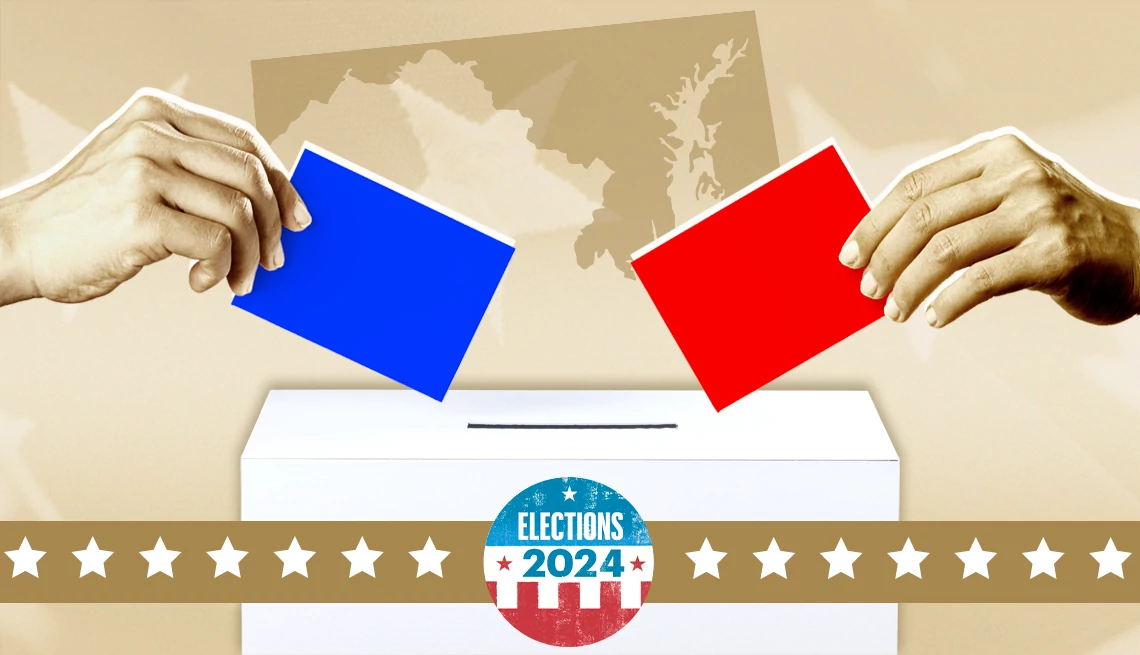AARP Hearing Center


In a close race for the open U.S. Senate seat in Maryland, candidates Republican Larry Hogan and Democrat Angela Alsobrooks are currently tied among voters, according to an exclusive AARP poll released Tuesday.
Among voters 50-plus, former Maryland governor Hogan leads by just two percentage points, the poll found.
The candidates are seeking to replace retiring U.S. Senator Ben Cardin, a Democrat who announced in May 2023 he would not seek reelection after he completes his third term. The outcome of the race could impact the balance of power in the Senate.
Among Maryland voters 50-plus, the survey shows Hogan ahead of Alsobrooks, 47 percent to 45 percent. Among all voters, the two candidates are tied at 46 percent.
If elected, Alsobrooks would be the state’s first Black U.S. senator, and she leads by a significant margin among Black voters 50-plus, with 74 percent favoring her compared with 22 percent who say they would vote for Hogan.
Hogan was Maryland’s governor for eight years, with a term that ended in 2023. Alsobrooks, a lawyer, has served as state’s attorney for Prince George’s County.


Pollsters interviewed 1,258 likely Maryland voters about the U.S. Senate and presidential races and the issues motivating them to vote. The bipartisan polling team of Fabrizio Ward and Impact Research conducted the AARP-commissioned survey from Aug. 14 through Aug. 20.
Bob Ward, a partner with Fabrizio Ward, said the U.S. Senate race is “absolutely too close to call.”
“Given Hogan’s support among Democrats, and the number of voters who still don’t have a firm opinion of who Angela Alsobrooks is, she has more upside potential in the race,” Ward said. “It would not be a surprise to see most of the undecided [voters] in this race break to Alsobrooks by the time Election Day comes.”
A Democratic lead in the presidential race
In the presidential race, more Maryland voters said they plan to cast ballots for Vice President Kamala Harris, a Democrat, instead of former President Donald Trump, a Republican, poll results showed.
Among voters of all ages, 64 percent say they would vote for Harris, compared with 32 percent for Trump in a head-to-head match-up. Harris maintained her lead, though it narrowed slightly, among voters 50-plus. In the older age group, 61 percent of Maryland voters favor Harris compared with 35 percent for Trump.



































































More From AARP
AARP Election Polls: How Candidates Are Faring Across the U.S.
Find exclusive data on the 2024 presidential race and issues that matter8 Things to Know About Election Disinformation and AI
Artificial intelligence spreads, amplifies falsehoodsHow to Register and Vote in the 2024 General Election
State-by-state guide to everything you need to knowRecommended for You